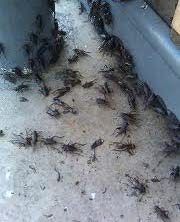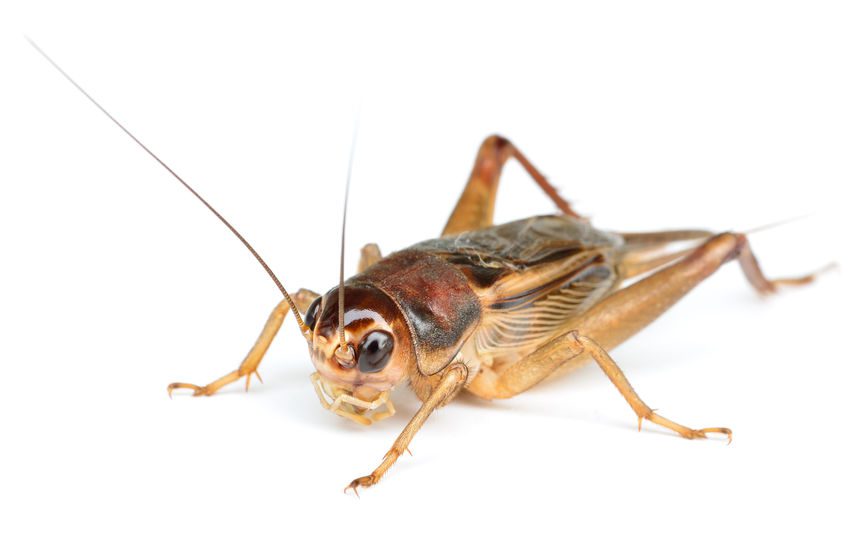Identification and Life Cycle
Crickets commonly found in homes are the House Cricket (Acheta domestica), Field Cricket (Gryllus pennsylvanicus), and Spotted Camel Cricket (Ceuthophilus maculatus).
The House Cricket is approximately 3/4 – inch long, and has a light yellowish-brown color with three dark bands behind the head and long, pointed wings. Besides being a household nuisance, these crickets are typically bred and sold in bait and pet stores.
The Field Cricket, is about 1/2 to 1–inch long, and dark brown to black in color with black antennae. They have rounded wings that almost cover their whole body.
The Camel Cricket, is 3/8 to 3/4 –inch long, and has larger hind legs than other crickets. It is tan to dark brown in color, wingless, has a long antennae, and a humped back appearance. These crickets do not chirp due to its lack of wings.
Crickets are related to grasshoppers and katydids. You can identify them from their long antennae, and their large back legs. The adult females have a sword-like ovipositor or egg-laying device extending backwards from the tip of the abdomen.
In the spring, on average the female will lay 50 to 100 eggs as deep as 1-inch below the ground. Because of the warmth of the soil, nymphs (the young) can develop in two weeks, breaking through the egg and digging upward to the surface. The nymph stage can last from 8-12 weeks, but they are more likely to survive for only one week. The nymphs are easy prey for birds and other insects. Crickets normally die outby autumn or early winter.





Comments are closed.